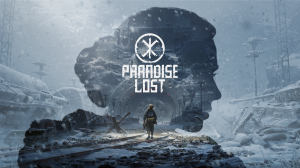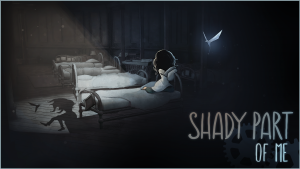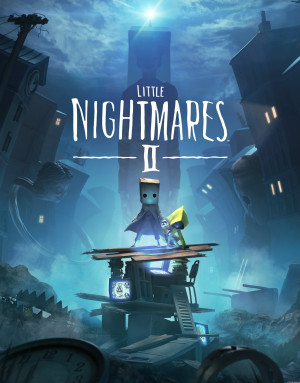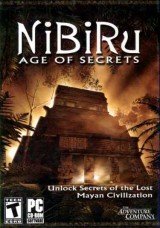Review for Paradise Lost
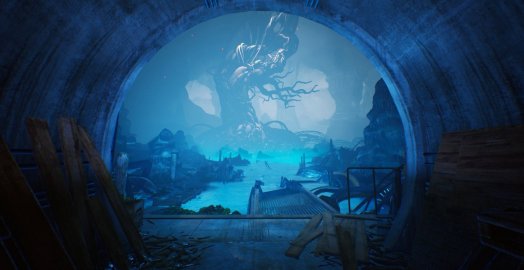
Frost-covered tanks silhouetted against a cloudy sky. The spine of a book, appropriately by John Milton, side by side with a child’s bedraggled stuffed bear in a crate protruding from a snowdrift. And tracks leading to a subterranean bunker. This austere, bleak world forms the backdrop to PolyAmorous’s retro-futuristic Paradise Lost, a first-person 3D exploratory adventure in the vein of Firewatch and its ilk. You take on the role of Szymon, a teenaged boy who has come to the bunker in Poland 1980 with a photograph of his mother and a mysterious man Szymon hopes to find. While Szymon’s tale isn’t full of unexpected twists and turns, it is well told as he travels through the impressive confines of this abandoned end-of-the-world Nazi installation.
The highlight of Paradise Lost is easily its setting. The game hypothesizes that the Nazis built a large hidden bunker in Poland where select members of German society could be ensconced if World War II had resulted in a nuclear winter. No simple collection of concrete and metal rooms, it’s an entire underground town, complete with a lavish train station, a baroque-styled street lined with ornately carved buildings, and even a beach with a distant lighthouse, long extinguished, visible across an underground bay. All of this is depicted in a realistic 3D art style with sufficient detail to be credible, which makes the mood all the more melancholy when you notice signs of an armed conflict and the general decay of entropy that has long since set in.
The key word here is underground. While these types of locations would seem normal dotting an aboveground countryside, there’s an eerie quality to them when surrounded by the glistening rocks of a nearly endless cave system. Even the more spacious areas feel enclosed and claustrophobic. Add to this the ambient sound of windy echoes, faintly dripping water, the creaking and steaming of aged machinery still chugging away decades after the war, and occasional twangs of wind and string instruments playing simple chords in lieu of actual music, and the result is a unique locale that oozes atmosphere.
Of course, the classical veneer of this society is only skin deep. As you explore further, you’ll find the more typically bunker-esque areas that were reserved for construction and research. The Nazis, it seems, had several projects on the go, including the development of a computer to rival the American’s ENIAC, a self-sustaining hydroponics system, and a twisted eugenics program involving Polish women as breeding stock. The ideas follow fairly common notions from the speculative fiction of the 1940s and 50s, and it’s interesting to dig into the dense backstory the developers have woven. Anyone familiar with the works from which the game draws its influences will feel right at home here, though it does mean that most if not all of the narrative surprises and twists tend to be predictable.
Despite the many decades since its construction, it quickly becomes apparent that the bunker is not as abandoned as it first seems. Locked doors barring your way mysteriously open, and security cameras tucked into the corners of rooms turn to follow your every move disconcertingly. In short order, you’ll be guided by this unseen presence to a vintage radio set, where you’re introduced to a woman trapped in the control center. She insists that you trust her and that you come free her without so much as a proper introduction. That doesn’t happen until quite a bit later on, when she reveals that her name is Ewa (pronounced Eva). Szymon, Ewa, and a couple of ancillary characters heard only on old audio recordings are all fully voiced, Polish accents and all, with subtitles also provided. The voice cast does an adequate job, with no stinkers in the batch, though none of the performances are particularly memorable either.
Throughout the game, Ewa speaks to you over the PA system that the Nazis built into their installation. Initially she is primarily concerned that Szymon doesn’t abandon her, but gradually it becomes clear that Ewa has been here longer than she first lets on, and more and more of who she is and how she got here is revealed, along with a few insights into Szymon’s background as well. Periodically, Szymon gets the chance to engage in a proper conversation with Ewa when he finds more radios and microphone stations. During these interactions, dialog choices are frequently presented for how to deal with Ewa.
I played through the game twice, picking radically different responses each time. In one pass I was completely trusting and friendly towards Ewa, while in the next I doubted her motivations all the way and only grudgingly trusted her when I was forced to by the story. The consequence of these choices proved to be minimal, resulting in a few altered lines of dialog at the moment the choices were made but having no lasting memory or impact beyond that. For example, in the first meeting between Szymon and Ewa, it’s possible to accept or refuse Ewa’s help. Accepting her offer has her open a door that is otherwise impassable, along with offering her thanks for your trust. Refusing her offer still has her open the door, however, even as she paradoxically taunts you to see how far you can get without her help.
The limitations in player choice also extend to your exploration of the bunker. Early on, you must get into the train station the Nazis built. You can either brazenly enter through the front door, and then have to secure appropriate stamped papers to pass an automated security gate, or you can sneak in through a disused luggage chute. Eventually both these paths join back together, but from that point on I was quite looking forward to having alternate approaches available. Unfortunately, that proved to be a false expectation as the entire rest of the game is a single linear passage towards the finish line.
Paradise Lost does offer, as most such games of this type do, some final decisions in its closing moments that lead to several different possible endings. While I won’t spoil anything, I will say that if you’ve at all been paying attention to the story, the final reveal and narrative options will come as no surprise. A little care needs to be taken to view all the alternate endings without having to replay the entire game, as once the credits completely finish rolling, the single progressive autosave is wiped out. Exiting out before the end of the credits should leave the autosave intact so that the different endings can be viewed by continuing on from the final checkpoint.
Beyond marveling at the scenery and conversing with Ewa, there’s not a whole lot to do in Paradise Lost. You can manipulate a few physical objects to progress, such as pulling on a door handle or throwing a lever to trigger an elevator platform. This is accomplished by getting close to round floating hotspot indicators and clicking. A circle is then displayed in the center of the screen with a small dot in its middle that must be dragged up, down, left, or right toward one of the circle’s edges. Having done that, Szymon will respond in a corresponding manner to manipulate whatever you’ve interacted with. It’s also possible to climb over or crawl under various environmental objects such as crates or fallen support beams that partially block tunnels. This is even easier, as all that’s required is to bump into the hotspot indicator and Szymon will take care of the necessary actions.
While there’s an assortment of graphical configuration options, there are none for remapping the controls, but none should be needed as the rest of the game operates in a fairly standard way. Either a gamepad or the standard WASD keyboard/mouse combination can be used to move around the environment. The occasional item can be picked up while wandering around, though at no point do you ever have more than two at a time. Even these are applied automatically when the correct hotspot is interacted with, at which time the object, represented by a small icon in the bottom corner of the screen, is removed from your possession. As you explore there are two movement speeds, the default very slow walk or the almost-imperceptibly-less-slow “running” speed achieved by pressing and holding the run button (nope, no toggle option here). Szymon’s footfall is the one aspect of the game’s audio that is really overdone, sounding like a giant stomping through the installation. So loud are his steps that I initially thought it was some sort of enemy chasing down the slow-moving protagonist.
Szymon’s plodding pace is only part of what contributes to the game’s five-hour run length. A great deal of time is spent reading the copious number of notes, journals, and official communiques that have been left scattered throughout the environment and can be examined in detail at the press of a button. There’s a nice amount of variety here, from Nazi messages about provisions and the progress of their projects, to historical information on the overthrow of the Germans by the Polish, to ecclesiastical notes on the formation of a quasi-religion, to personal anecdotes about the petty differences and squabbles between residents of the bunker. It’s a lot of reading but an effective way to get more insight into this world you’re exploring. When a note is interacted with, Szymon will pick it up in his hand, where you can view the text directly as written. If that’s not clear enough, an additional button press will display a text overlay of the document, although with its harsh white print on a black background, it will leave an afterimage burned into your retinas when you put the note away, especially given how dimly lit the world is.
Some of these notes, of course, are related to Szymon’s personal quest. In among everything else are tidbits of information about the young man’s mother and the mysterious man in the photo he possesses. Like threads in a tapestry, these elements are introduced a strand at a time. As events progress, they weave together to present a clear picture of the past and the impact it will have on Szymon’s future. With Ewa as the only available confidante, it’s not surprising that she gets drawn into this aspect of the tale too, though the less said the better here to avoid potential spoiler territory.
Stories need not be unexpected or offer up an unending stream of unforeseen twists and turns to be entertaining. Paradise Lost’s tale is straightforward, but it’s well told and a fine homage to the speculative fiction from the first half of the twentieth century. Szymon and Ewa are interesting enough characters to make you want to keep following through their journey, and the expansive bunker setting is steeped in grim atmosphere that makes it fascinating to roam. While the proceedings would certainly have benefited from more to actually do, or by more impactful player agency in making choices with Ewa, at the end of the day this is a nicely solid package buried in the wintery tundra of Poland.


